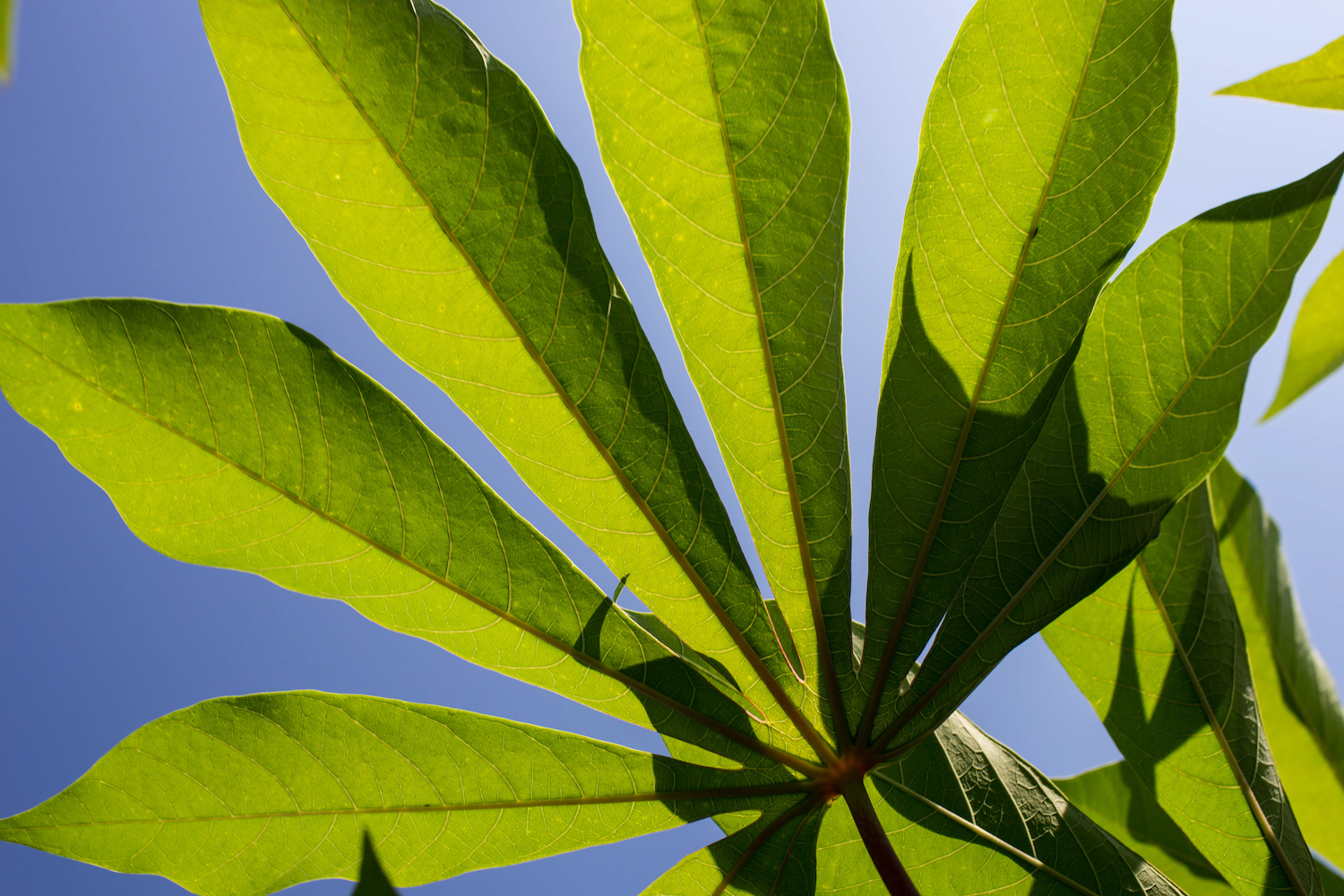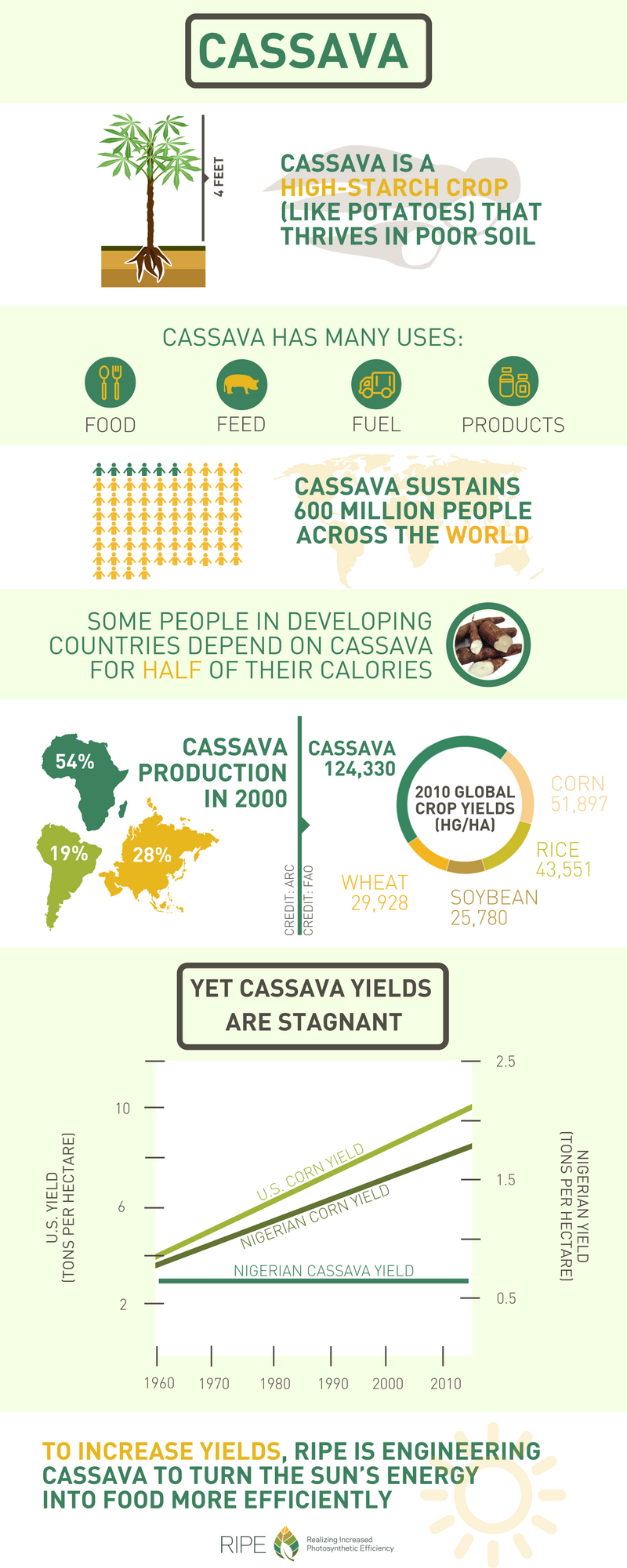Researchers root for more cassava research

Cassava makes up nearly 50 percent of the diet in parts of sub-Saharan Africa, where populations are projected to increase by more than 120% in the next 30 years. With stagnant yields for the last half century, scientists realize the need to focus their efforts on this crop, which is particularly valuable for rural smallholder farmers.
A prestigious Tansley Review, published in New Phytologist, found that the average yield of this starchy staple food crop has not significantly increased since 1961 -- but there are major opportunities to increase yields by improving photosynthesis, the process where plants turn light and carbon dioxide into food and fuel. This is the first publication that has explored improving photosynthesis, in conjunction with other aspects of physiology, in cassava.
The paper quantifies 14 different routes to yield improvements that might be achieved through genetic modifications of the plant. Individual improvements could realize as much as 25-100% improvement in yield as well as water and fertilizer use efficiency.
"Cassava is so important to so many people, yet while we have seen massive efforts to scientifically understand and improve the yields of other crops, in comparison cassava has been neglected," said lead author Steve Long, Gutgsell Endowed Professor of Plant Biology and Crop Sciences at the University of Illinois. "Here we have summarized and integrated scientific knowledge of the crop as a basis for understanding how sustainable yield improvement might be achieved and to identify critical gaps in knowledge."
This work is part of Realizing Increased Photosynthetic Efficiency (RIPE), a multi-institutional research project, led by Long, that is improving photosynthesis in cassava and other staple food crops in developing countries to increase global food production sustainably. RIPE is led by Illinois at the Carl R. Woese Institute for Genomic Biology.
Cassava is a vital food crop for more than 600 million people worldwide (see infographic below). It thrives on marginal lands, especially in semi-arid tropical and sub-tropical lands that could be the most severely impacted by climate change.
"An alternative would be to introduce new crops that have higher yields, but there are good reasons for favoring cassava, and cultures cannot change and should not be expected to change overnight," said first author Amanda De Souza, a postdoctoral researcher with the RIPE project. "With all the know-how in growing and preparing cassava as a food, it makes the most sense to improve this crop rather than try to replace it with other crops."

Over the past 50 years, cassava yields have flatlined whereas corn yields in Nigeria (a major cassava producer) and the U.S. have more than doubled.
Most published research to date, the study found, has focused on improving the nutritional value or disease resistance of cassava. Even with these improvements, the current yield potential of cassava creates a ceiling, limiting how much food smallholder farmers can produce.
"We found cassava is photosynthesizing far below its theoretical limit," De Souza said. "If we can improve photosynthesis, we might gain large sustainable increases in the yield of this important crop."
Long, De Souza, and colleagues suggest "synergistic improvements"--multiple opportunities to increase the yield of cassava under environmental stresses, such as drought and nutrient deficient soil. These opportunities include improving the architecture of the plant's leaves to better capture light and genetically improving the rate of photosynthesis.
In the future, De Souza believes this paper will serve as a tool. "I think this manuscript can guide people that want to improve the yield of cassava.
RIPE and the National Science Foundation Graduate Research Fellowship Program (under Grant Number DGE -1144245) supported this work. Photo provided courtesy of Angela Obiageli of Covenant University, Nigeria. Co-authors include Lynnicia Massenburg, Deepak Jaiswal, Siyuan Cheng, and Rachel Shekar.
By: Claire Benjamin || RIPE project
